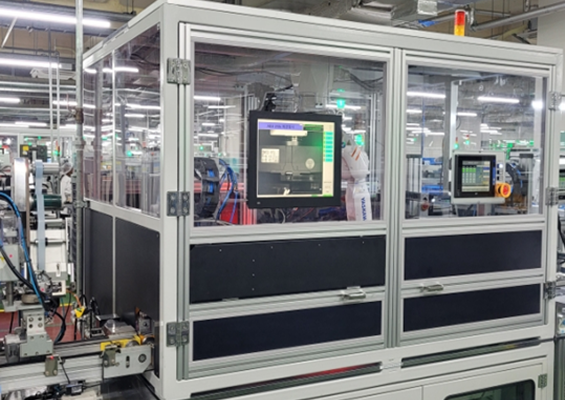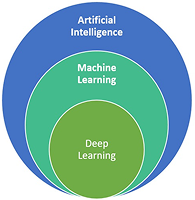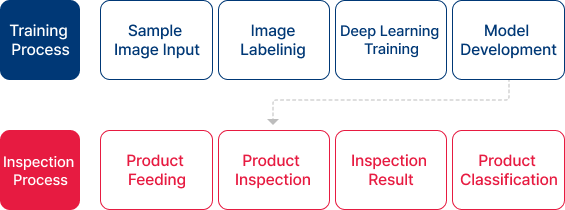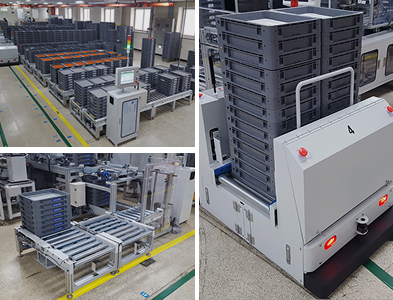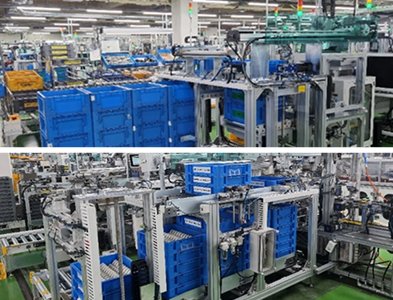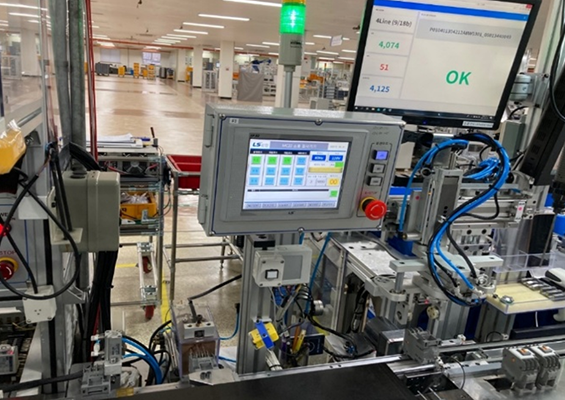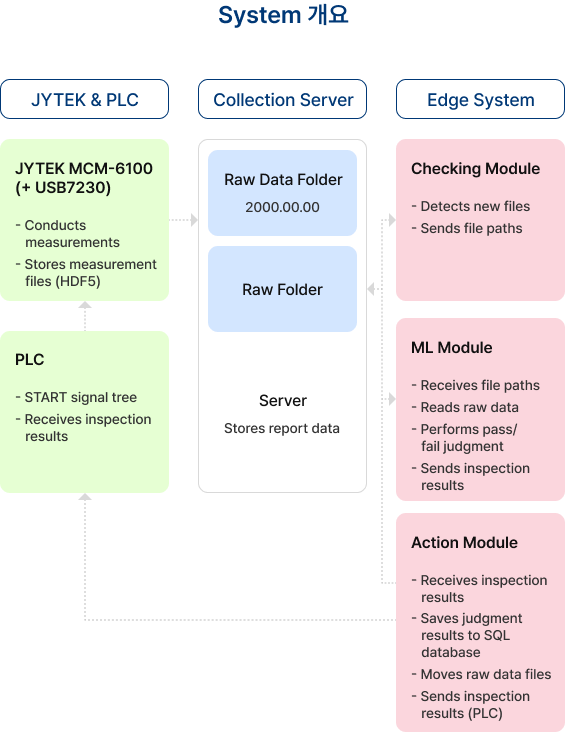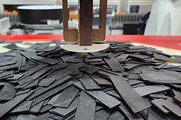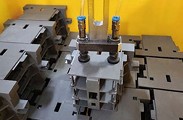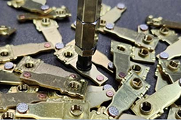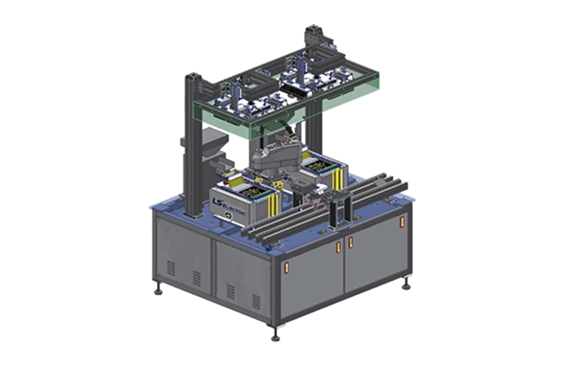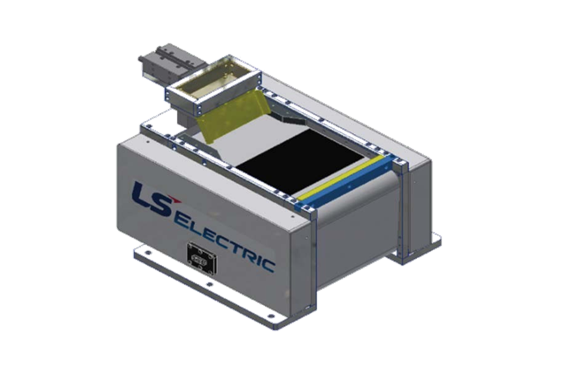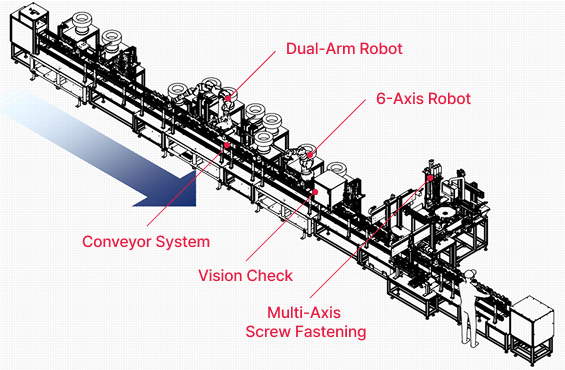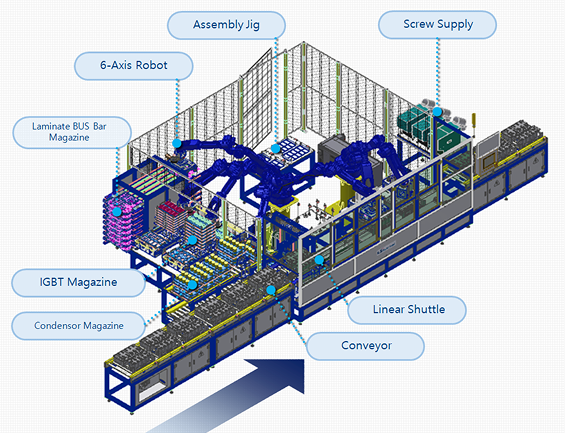AI-Based Vision Inspection (Deep Learning System)
System Overview
※ Deep Learning-Based Inspection System
-
AI-based technology
-
Autonomous learning from image data
-
An algorithm developed using open-source
framework
-
An algorithm developed and owned
by LS ELECTRIC
※ Deep Learning Inspection Method
※ Key Features of the Deep Learning Inspection System
(Compared to manual or rule-based inspection systems)
-
Capable of inspecting irregular or non-standard products
-
Reduces labor and time required for reprogramming when new
defect types are introduced
-
Eliminates the risk of inconsistent or inaccurate judgment due to
fatigue or emotional factors
Smart Logistics
An advanced logistics automation system that utilizes AGVs (Automated Guided
Vehicles) for parts supply and product transport on automated assembly lines. The
system enhances musculoskeletal safety and establishes a foundation for efficient
logistics workforce management.
-
System Configuration
Parts storage conveyor / Box lifter / In-out conveyor / ATC for parts box supply / AGV system / AGV auto charging
- Development Timeline
Review: 1 month, Manufacturing: 4 months, Commissioning: 1 month
- Investment Benefits
Labor savings (2 personnel), Smart logistics factory, Prevention of safety incidents and musculoskeletal disorders
Product Transport System Features
-
Centralized AGV control, Autonomous AGV navigation
-
Automated logistics of parts and semi-finished
goods via AGVs
-
Automated box loading and unloading at ATC using lifters
-
Automated parts box supply and retrieval
-
Automatic AGV charging via auto chargers
Parts Supply System Features
-
Cartesian robot application technology
-
Position control via PLC
-
Automated part supply and stacking using
Cartesian robots
-
Integration with AMRs (Autonomous Mobile
Robots) for advanced logistics automation
AI-Based Noise Inspection
Applied Technologies
-
Microsoft Azure IoT Edge:
Evaluates inspection results and
stores data
-
PC - Data Acquisition:
Measures and collects data
-
HDF5 File Format: Minimizes
the volume of stored data
Gap Welding Automation
Applied Technologies
-
1) Integrated control of vision system, robot, and laser
welder
-
2) Current supply system control
-
3) Feedback control of overcurrent test bench via RFB (Realtime Feedback) system
BPS (Bin Picking System)
A system that enables the supply of irregularly
shaped parts for assembly, inspection, and
other manufacturing processes
Key Features
-
2D, 3D Vision Camera Application for Picking
Atypical Parts
-
In-House Developed SFS(Smart Feeding System) Applied
- Customized to fit part sizes and shapes
- Automatic model change
Equipment Examples
SFS(Smart Feeding System)
Automated Assembly Equipment
An automated assembly line utilizing dual-arm
and 6-axis robots to assemble parts and fasten
screws.
The system verifies component assembly and
screw fastening status to determine pass/fail
results, enabling one-person operation.
Equipment Examples
Applied Technologies and Features
-
Dual-Arm Robot, 6-Axis Robot, and Single
Robot position control
- Optimized task allocation through efficient
process analysis
- Gripper design for multi-component
gripping
- Avoidance of robot motion conflicts
-
Maximization of Efficiency based on IE
Principles
-
Fool Proofing with Smart Vision Technology
- Missing part detection and assembly status
verification
-
Multi-Axis Screw Feeding and Fastening
-
Single-Operator Assembly Line Management
Application Areas
-
Automation for Small or Mass Production
of Medium-Sized Parts
-
Automation of Manual Labor-Dependent
Processes
-
Automation of Dust-Generating Parts
Assembly
-
Automation of Multi-Axis or High-Speed
Fastening
-
Vision-Based Inspection for Automated
and Manual Assembly Processes
- Defect detection through motion analysis
in manual processes
-
Productivity Improvement through
Process Analysis
Multi-Tasking Robotics System
An automated system using two 6-axis robots
to assemble and fasten components such as
condensers, IGBT modules, and laminated bus
bars. The system records pre-assembly part
information and screw fastening data, and
links it with frame information to ensure full
traceability.
Equipment Examples
Applied Technologies and Features
-
Multi-Component Assembly Using 6-Axis Robot and
Linear Shuttle
- Precise assembly using assembly jigs
- Tool change tailored for specific components
- Auto screw fastening and data storage
- Ensuring precision of the linear shuttle
-
Parts History Management and Traceability Assurance
-
Auto Alignment and Fool Proofing Using Vision
Technology
- Ensuring accuracy in assembly direction and positioning
- Assembly inspection
Application Areas
-
Automation for Large Products of High-Mix, Low-Volume Production
-
Assembly of Products Requiring Parts History Management and Traceability
-
Automated Assembly for Parts with Difficult
Positioning
-
Parts Assembly Requiring Data Acquisition
and Management for Each Fastening Point
-
Rationalization of Manual Assembly Processes Deemed Difficult to Automate
-
Automation of Assembly Inspection
-
Effective Investment in Processes Requiring
Productivity Improvement

















